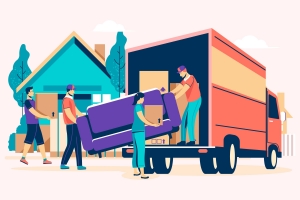In the competitive and complex field of restoration, precision in cost estimation can significantly impact the success and profitability of projects. Restoration estimating software has become an indispensable tool for estimators, providing the capabilities to deliver precise, timely, and efficient project assessments. This article explores the top restoration estimating software available today, highlighting how these advanced tools are revolutionizing the industry.
The Importance of Restoration Estimating Software
Restoration projects, whether due to natural disasters, accidents, or wear and tear, involve numerous variables that can drastically affect the outcome. These variables include material costs, labor, project duration, and the complexities of insurance claims. Effective estimating software helps restoration professionals manage these elements by providing accurate, up-to-date information that ensures compliance with industry standards and facilitates seamless communication among contractors, clients, and insurance adjusters.
Key Features of Leading Restoration Estimating Software
Accuracy and Precision: Leading software solutions offer comprehensive pricing databases and integrate seamlessly with job management systems, providing real-time updates and necessary adjustments. This precision helps avoid costly overruns and underestimations that can jeopardize project success.
User-Friendly Interfaces: The best estimating tools feature intuitive interfaces that simplify data entry, making it easy for estimators to quickly generate accurate estimates. These intuitive interfaces typically feature customizable templates and automated workflows that streamline tasks and minimize the risk of human error.
Integration Capabilities: Top-tier estimating software frequently offers integration with other business management tools, including CRM systems and accounting software. This integration enhances workflow automation and ensures consistency and accuracy across various platforms, improving overall operational efficiency.
Mobile Accessibility: Mobile features are increasingly important in modern software solutions, allowing estimators to access and update data directly from the job site. This capability improves responsiveness, facilitates immediate decision-making, and enhances client service by providing on-the-spot estimates.
Top Restoration Estimating Software Reviews
Xactimate: Widely recognized as the industry standard, Xactimate offers a robust set of features suited for both small and large restoration companies. Known for its extensive, regularly updated pricing database and sophisticated sketch capabilities, Xactimate facilitates detailed floor plans and precise material and labor estimates, making it a favorite among professionals.
RSMeans Data Online: This tool is invaluable for projects requiring detailed material and labor estimates. RSMeans Data Online provides accurate, up-to-date construction cost estimates that are critical for setting realistic budgets and timelines. Its comprehensive data covers various construction activities, making it a versatile tool for restoration projects.
Corecon: Ideal for managing multiple projects, Corecon offers excellent project tracking and budget management features. It integrates well with other software systems, allowing restoration companies to maintain a cohesive workflow across all stages of project management, from estimating to final billing.
The Role of a Restoration Estimator
Restoration estimators play a crucial role in the success of these software tools. These professionals are more than mere users; they actively configure and customize the software, adapting it to meet the unique requirements of each project. Their deep knowledge of construction and restoration estimator practices enables them to interpret and utilize the data effectively, making informed adjustments that reflect real-world conditions.
Challenges in Adoption and Implementation
Despite the clear benefits, the adoption of restoration estimating software comes with challenges:
Training and Skill Development: Ensuring that all team members are proficient with the new software requires significant training and time investment. This training is crucial to maximize the benefits of the software and should be considered an ongoing process.
Cost of Software: Advanced features and capabilities often come at a high cost, which can be a barrier for smaller firms or startups. Companies must weigh the benefits against the investment to determine the best software solution for their needs.
Adapting to Technology: Resistance to changing traditional methods can be significant, especially in well-established companies. Leaders need to manage this transition carefully, highlighting the long-term benefits and providing adequate support during the switch to new systems.
Conclusion: Enhancing Project Success with Estimating Software
Restoration estimating software revolutionizes the restoration industry, altering how estimators tackle project planning and execution. By choosing the right software and leveraging its full capabilities, restoration professionals can enhance their accuracy, efficiency, and overall project success. As the industry continues to evolve with technological advances, these tools become essential for any restoration business aiming to stay competitive and effective.






